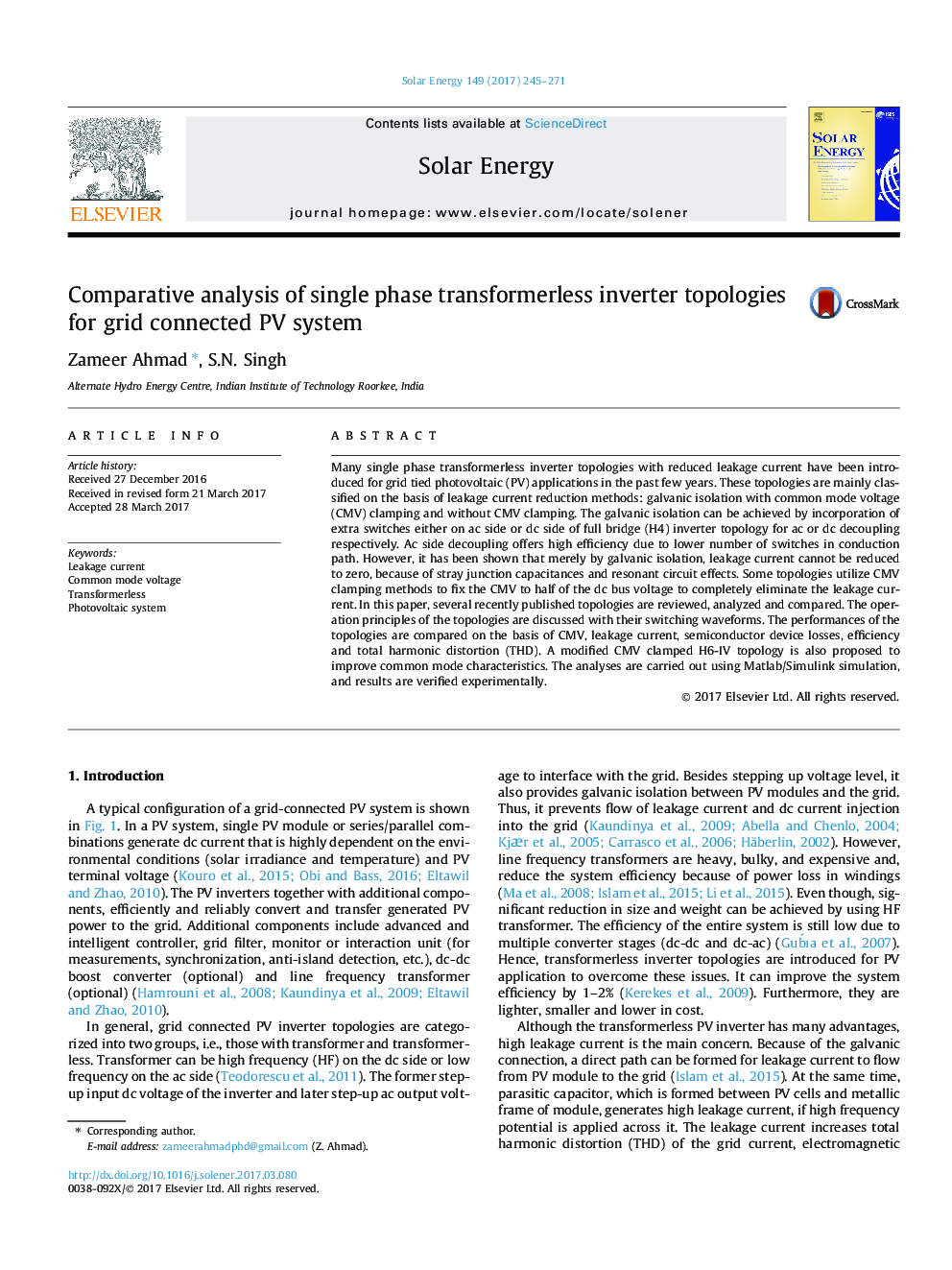| Article ID | Journal | Published Year | Pages | File Type |
|---|---|---|---|---|
| 5451084 | Solar Energy | 2017 | 27 Pages |
Abstract
Many single phase transformerless inverter topologies with reduced leakage current have been introduced for grid tied photovoltaic (PV) applications in the past few years. These topologies are mainly classified on the basis of leakage current reduction methods: galvanic isolation with common mode voltage (CMV) clamping and without CMV clamping. The galvanic isolation can be achieved by incorporation of extra switches either on ac side or dc side of full bridge (H4) inverter topology for ac or dc decoupling respectively. Ac side decoupling offers high efficiency due to lower number of switches in conduction path. However, it has been shown that merely by galvanic isolation, leakage current cannot be reduced to zero, because of stray junction capacitances and resonant circuit effects. Some topologies utilize CMV clamping methods to fix the CMV to half of the dc bus voltage to completely eliminate the leakage current. In this paper, several recently published topologies are reviewed, analyzed and compared. The operation principles of the topologies are discussed with their switching waveforms. The performances of the topologies are compared on the basis of CMV, leakage current, semiconductor device losses, efficiency and total harmonic distortion (THD). A modified CMV clamped H6-IV topology is also proposed to improve common mode characteristics. The analyses are carried out using Matlab/Simulink simulation, and results are verified experimentally.
Related Topics
Physical Sciences and Engineering
Energy
Renewable Energy, Sustainability and the Environment
Authors
Zameer Ahmad, S.N. Singh,
